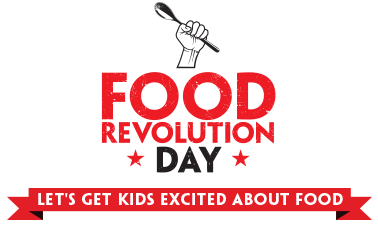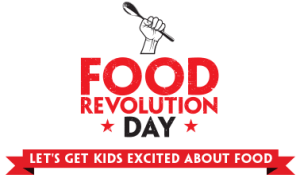One by one, the kids trickle into the room; it’s after recess, and they have all arrived for cooking class. It’s been the talk of the week so far. They’ve quizzed me on what we’re making, what vegetables it will entail, and each time their eyes have lit up, they’ve licked their lips in anticipation, and smiled. Today we’re making pizza from scratch. The dough was made in our last class a few days before and frozen for today, when we’re going to roll it out and top with cheese and various other things. The kids are completely beside themselves with excitement.
“This isn’t pizza out of a BOX,”one says, “We’re making it ALL.”
She’s right, too. I chop various vegetables-sweet peppers, mushrooms, onions, and place them in bowls on the table. The biggest lesson I’ve learned in working with kids in the kitchen is that if you offer vegetables with no comment or pressure, they will try things you’d never expect. Just offer variety and encouragement, and their natural curiosity will take care of the rest. Put them in charge of their tasting, and they will surprise you.

Soon the kitchen is alive with kids rolling out pizza dough, slathering with sauce, shredding cheese, and choosing vegetables. They’ve never made pizza before and some comment how wonderful things smell. Have you ever smelled fresh yeast dough or a sweet pepper? It’s heady stuff. You can feel the anticipation in the air as the pizzas go into the oven and the group begins cleaning up, setting the table, and chatting as they wait. When they ask me about why I love to cook with kids so much, I tell them that my passion to teach kids about food all started with a chef named Jamie Oliver and a show called Food Revolution that aired in 2010. The show followed Jamie Oliver as he attempted to change school lunch programs in Huntington, West Virginia and later went on to win an Emmy for Outstanding Reality Program. It was more than just a TV program, however; since then Food Revolution has grown and stretched into a full fledged movement. In fact, Today is Food Revolution day; a day to celebrate the one life skill that puts families together, nourishes our bodies and souls, and is fast becoming a lost art in our ever more busy society-cooking. Last year, over 10, 000 events were held in 131 countries worldwide! If you believe that good, solid food education should be compulsory in schools, make sure to drop by and sign the petition to add your voice. Jamie is calling on all the leaders of the G20 countries to make food education compulsory in school curriculum world wide.
Shortly after watching my first episode of Food Revolution, I went to my job as a special education assistant at a high school. Sitting in the office that day was one of my students, and after we chatted a little, I realized that not only did he not have a lunch, but he hadn’t eaten since the day before. When I went to find him something, all I could dig out of the staff room fridge was some stale cheese spread and a hot dog bun. I was horrified. Soon, I was packing him lunches from my own kitchen from home but realized that if I taught him how to make his own lunch, he’d be better off. From then on, I’d drop in on his Foods classes, and we’d make something he could have that day for lunch. The next year I was placed in an alternate program, teaching kids in unstable home situations how to cook.

It’s very humbling when you realize that the kids you are teaching to make a salad may have never eaten a salad because produce is too expensive. For these kids, cooking was survival; a skill that may land a job or even a way to make something tasty out of offerings from the food bank.
From then on, teaching the basics of cooking to anyone who wants to learn has been a passion of mine.
The pizzas come out of the oven, hot and bubbly with caramelized edges that will singe your fingers if you touch them. The kids crowd around, each pointing out their pizza and exclaiming over how wonderful it looks. One would think it’s Christmas, the anticipation is so electric. Soon everyone is at the table and it’s silent as the kids tuck in to their own homemade pizza, complete with vegetables and gooey mozzarella. This is the time where we have some deep conversation about food and where it comes from-when the kids are all sequestered in one place, with something to keep them busy.
“Why do you think it’s important to know how to make your own food?” I ask. I’m not leading them on this one at all; I want to know what they really think.”
“It’s yummy,” one girls says.
“You want food that you know what’s in it, so it’s not something from a factory full of chemicals,” another adds. I stop, dumbfounded, and look at him with a grin. “Besides,” he adds between mouthfuls of hot pizza, ” This pizza is AMAZING.”


 May is Gluten Free Month – Do You Need to Jump on the Bandwagon?
May is Gluten Free Month – Do You Need to Jump on the Bandwagon?